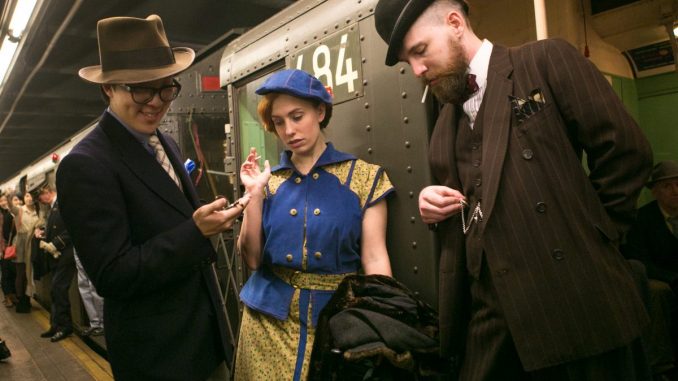

All over the world, people have the sense that something has gone wrong. Our neighborhoods are no longer safe. Children aren’t learning the skills they need for life in school; instead they are taught to judge everyone by their race or gender. The jobs we thought we would have for decades disappear with little warning, and the only new jobs we can get don’t pay enough to live on. Marriage is no longer the rock on which we can build out future; all around us, we see friends and family members getting divorces. Entertainment seems intended to be shocking instead of enjoyable. What is going on?
The answer is, a deliberate effort to destroy all historic cultures and replace them with ideologies. Cultures develop from the ground up over many generations, and they reflect what those generations have learned. They are accumulated wisdom, the wisdom of many, often millions of people. They vary from place to place because the conditions of life also vary geographically, and peoples have different histories. Cultures is embodied not in politics and laws but in customs, habits, and traditions. These guided our ancestors for m any generations, and they worked. They gave those people good lives, as good as surrounding conditions would permit.
Many different ideologies are trying to destroy and replace traditional cultures, but they all share certain characteristics. Instead of broad human experiences they are the product of one or a few philosophers. These philosophers say that certain things must be true, others false—regardless of the evidence. Instead of bottom-up, ideologies come top-down, imposed by government once the ideologies capture political power (they often conceal their real nature and goals until they do). Because these philosophers have proven wrong on some things, yet “know” their ideologies cannot err, they use the power of the state to force their beliefs on everyone. That may be done with social and economic pressure, as we now see with the “woke” ideology (it’s really cultural Marxism) in the United States and Europe, or through arrests, “re-education camps,” show trials and mass murder in other parts of the world. Either way, the result is societies that don’t work and deep human misery.
What can ordinary people do? How do we recover a society where things do work, where most people can live good, rewarding, satisfying lives? If you are out driving in an unfamiliar area and take a wrong turn, soon finding yourself on a road that is ever-rougher, you turn around and head back. Societies need to do the same thing.
This may have to start with politics, to take political power away from ideologues so they cannot force their beliefs on everyone. But politics alone is not enough. Real change in a society must come the old way, bottom-up, as individuals, families and communities change the ways in which they live. But what can they change them to? How do we know what will work?
The answer is, our traditional cultures. We know they worked, because both history and the memories of our own families and friends tell us they did. Even when times were bad, in depressions or wars, families and communities survived because they held together, following the old customs, habits, and traditions. In most places, those days are not far gone. In the United States, our last normal decade was the 1950s. Most people were alive then remember the ’50s as good years.
If we are not to recover the old ways through the power of government, how can we do it? Through a broad, popular movement. I call it the Retroculture Movement. It is made up of ordinary people who are reviving old ways of living in their own and their family’s lives.
The Retroculture Movement has been quietly gathering steam for some time. A national poll, taken as early as 1992, showed that people knew life in the past was in many ways better. 49 percent of those polled thought life in the past was better; only 17 percent thought it was worse. 47 percent thought their grandparents lives were happier than their own. 58 percent thought our nation’s leaders should lead us back toward the way life used to be.
If we start to look for it, we will see Retroculture happening all around us. In many towns and cities, people are restoring old houses and commercial buildings instead of tearing them down and building new ones. They know the old ones, when they were new, looked better than the cheap stuff put up nowadays.
In downtown Cleveland, Ohio, businesses have been stripping away the nasty, modern facades off the grand buildings on Euclid Avenue and exposing the wonderful Victorian storefronts concealed underneath. In the town of medina, Ohio, just south of Cleveland, local townspeople led a movement that restored all the buildings on the beautiful town square. They then had Amish carpenters build a new, Victorian bandstand on the square, where on summer Friday nights a band plays and they hold an ice cream social.
Most of what you find on television is pretty disgusting. But a growing number of channels are re-running old shows from the 1950s and ’60s. Ed Sullivan is on again, with quality acts in an old-fashioned variety show (he gave the Beatles their real start in this country). You can find most of the old Westerns, and comedy shows too, where the humor is funny without being dirty. Who doesn’t laugh with “I Love Lucy”?
Of course, if you join the Retroculture Movement, some people will tell you the past was nothing but “oppression.” What nonsense. It wasn’t perfect, because people are not perfect.
No society will ever be perfect, and attempts to create a perfect society always backfire. But very few people were “oppressed.” Minority communities were safe places where most children came home from school to a married mother and father and where the problems in their schools were running in the halls and talking in class, not drugs and guns. I am old enough to have known Victorian women, and if someone had told them they were “oppressed” they would have responded with gales of laughter. They knew what they wanted and were very good at getting it.
If the past is another country, as one author said, it is one waiting for us with open arms. Its borders are all open, with big signs saying, “Come One, Come All.” The Retroculture Movement can turn things around in countries all over the world. We can again face a bright future, one shaped by the wisdom of many generations, not some crackpot philosopher and his “true believers.” What worked before can work again, and each of us can make it happen.”
William S. Lind’s latest book is Retroculture: Taking America Back (Arktos Books, London).






Be the first to comment